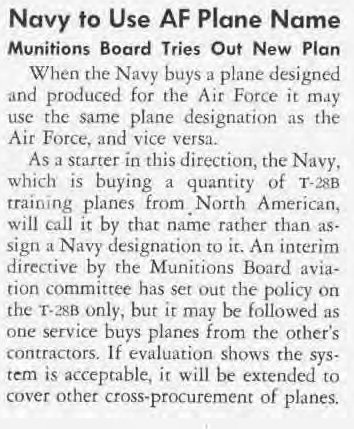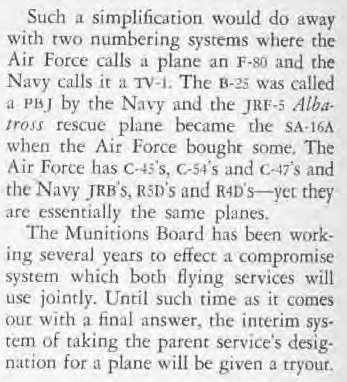gatoraptor said:
Has anyone come up with why most helicopters since 1962 are still being numbered in the old pre-1962 system, and why some trainers (but not all) were also numbered in the old system?
Whether to continue the "old" or the "new" series was explicitly defined in the various regulations concerning the redesignations in 1962. Of all the letters, which were taken over from the old USAF system, B, C and F were restarted with -1, while H, T, U and X were to continue the "old" series. The rationale behind this seems clear to me: The basic idea was to (re-)start
every series from -1, but the U-series had only reached U-5 anyway, and H, T, and X had relatively low numbered active designations, so that restarting at -1 could lead to conflicts in the near future. I don't know, why some redesignations for H and T used "low" numbers beginning from -1 anyway.
This scheme was followed for many years, until the USAF started to assign a few new "low" T-series numbers. The reasons for this are entirely unclear.
The biggest confusion is obviously in the C-series since the allocation of C-143A. At that time, I had e-mail contact to an officer in the DOD office which approved the MDS designators. I asked about the C-series, and was told that after the "new" series had reached C-41A, they ran into bureaucratic troubles (as I would call it

). There is a small sports plane called "Ikarus C-42", and it appears that DOD's "legal department" wanted to avoid a possible trademark violation. I know that this sounds a bit ridiculous, but that's what the DOD guy told me. Furthermore, he told me that at that time there were troubles with "classified designations" and they were not sure if some C-series numbers in the 40s were used by such "classified designations". He said that the easy way out of all this was to continue the "old" C-series for the next allocation - C-143A was definitely free for use. I don't think that my contact made all this up - it sounds like a genuine bureaucracy SNAFU. But it does not explain, why there were new designations in both "new" and "old" C-series afterwards. And unless someone here happens to know one of the current staff at DOD's MDS nomenclature office, we'll probably never know ...
And finally, the "old" F-series was never really continued in an "offical MDS" way. The various designations like YF-113A etc. (including F-117) were only cover designations, and (with the exception of F-117A) never part of the proper designation system.




